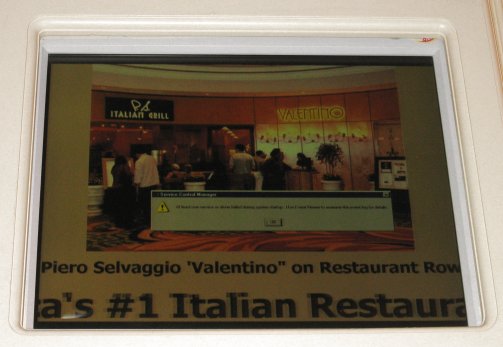So how was the Mix08 keynote? Let’s start with the good stuff. It went without a hitch; it was engaging; we saw some terrific Silverlight demos; and Internet Explorer 8 looks like a compelling upgrade. Not all Microsoft’s keynotes are this good.
Did Ray Ozzie make sense of Microsoft’s overall Internet strategy? I’m not sure. He was too visionary for my taste. That said, he made some interesting remarks. He says that “all our software will be significantly refactored” to better integrate with cloud-based services. He says that businesses will be able to choose between on-premise and cloud-based services. He says that virtualization is the key to a rise in utility computing. He also spoke of advertising as the commercial engine behind the next generation Internet.
Scott Guthrie, now Corporate Vice President of Developer Division, gave an impressive tour of what is happening with ASP.NET and Silverlight, with the latter the main focus. He says that Silverlight is now getting 1.5 million downloads daily. As expected, he announced the beta of Silverlight 2.0, which you can download now. He also announced Nokia’s support for Silverlight on Symbian, though this news actually broke on Monday. It is still significant, though getting any runtime deployed on mobiles is an arduous task: carriers as well as manufacturers have to be convinced of the value. He also mentioned that Sharepoint is getting Silverlight web parts.
Silverlight demos included Aston Martin, Hard Rock Cafe, and NBC’s site for the 2008 Olympics. Highlighted features included Silverlight’s zooming ability, which is the technology formerly known as Seadragon and now called DeepZoom, and HD video. The Olympic demos were engaging, with features like the ability to do instant, user-controlled replay of live video. Aston Martin’s demo showed how well Silverlight works for exploring an online showroom, inspecting and customizing your chosen vehicle in a virtual environment (I saw a similar Flash-based demo at Adobe’s Flex and Air launch a couple of weeks ago).
Dean Hachamovitch showed off IE8; I blogged about this yesterday.
Now, the tough questions. Silverlight looks great; but we saw similar demos here last year. Silverlight 2.0, which is the one most people care about, is now closer to release; but equally Adobe has moved forward with Flash, in particular improving its video capabilities, and the question hanging in the air is: what does Silverlight offer that Flash does not? In this respect, one of the more interesting remarks in the keynote came from a guy from Weatherbug, who demoed a Silverlight app which he said was running on Symbian. He observed that their developers had also tried to develop in Flash Lite, but it has proved costly (in development time) and “didn’t really work”. The Silverlight app by contrast had been done in three weeks. This is Flash Lite of course, not the full desktop Flash, but it would be fascinating to know what the critical differences were.
As for IE8, it is a huge step forward in standards support, but if you subtract what is arguably catch-up to FireFox, what are we left with? Activities and Web Slices look handy, but these are not major pieces. IE8 is not done yet, and apparently there will be more user-centric features before it ships – but when will that be? Microsoft’s Chris Wilson told me last year that it would be around two years after IE7, which would be autumn 2008, but that looks optimistic to me.
Overall my feelings are appropriately mixed. There is plenty of good stuff here, and Silverlight will be great for Microsoft platform developers who can integrate it seamlessly into their ASP.NET web applications. Whether it can mount a serious challenge to Flash in the wider Internet remains an open question.


